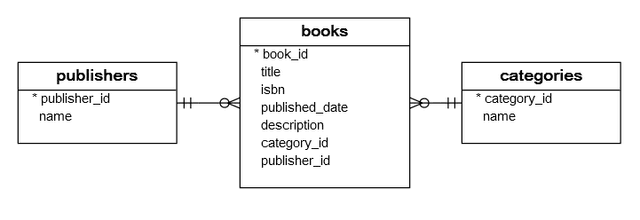 Summary: In this tutorial, you will learn how to use the PostgreSQL
Summary: In this tutorial, you will learn how to use the PostgreSQL DROP COLUMN clause in the ALTER TABLE statement to remove one or more columns from a table.
Introduction to PostgreSQL DROP COLUMN clause
To drop a column of a table, you use the DROP COLUMN clause in the ALTER TABLE statement as follows:
ALTER TABLE table_name
DROP COLUMN column_name;When you remove a column from a table, PostgreSQL will automatically remove all of the indexes and constraints that involved the dropped column.
If the column that you want to remove is used in other database objects such as views, triggers, and stored procedures, you cannot drop the column because other objects depend on it.
In this case, you can use the CASCADE option in the DROP COLUMN clause to drop the column and all of its dependent objects:
ALTER TABLE table_name
DROP COLUMN column_name CASCADE;If you remove a column that does not exist, PostgreSQL will issue an error. To remove a column if it exists only, you can use the IF EXISTS option as follows:
ALTER TABLE table_name
DROP COLUMN IF EXISTS column_name;In this syntax, if you remove a column that does not exist, PostgreSQL will issue a notice instead of an error.
If you want to drop multiple columns of a table simultaneously, you use multiple DROP COLUMN clauses in the ALTER TABLE statement like this:
ALTER TABLE table_name
DROP COLUMN column_name1,
DROP COLUMN column_name2,
...;Notice that you need to add a comma (,) after each DROP COLUMN clause.
If a table has one column, you can use drop it using the ALTER TABLE...DROP COLUMN statement. Consequently, the table will have no columns.
It’s worth noting that while PostgreSQL allows a table that has no column, it may be not allowed according to the standard SQL.
PostgreSQL DROP COLUMN examples
Let’s look at some examples to see how the ALTER TABLE...DROP COLUMN statement works.
We will create three tables: books, categories, and publishers for the demonstration.
 In this diagram, each book has only one publisher and each publisher can publish many books. Each book is assigned to a category and each category can have many books.
In this diagram, each book has only one publisher and each publisher can publish many books. Each book is assigned to a category and each category can have many books.
The following statements create the three tables:
CREATE TABLE publishers (
publisher_id SERIAL PRIMARY KEY,
name VARCHAR(255) NOT NULL
);
CREATE TABLE categories (
category_id SERIAL PRIMARY KEY,
name VARCHAR(255) NOT NULL
);
CREATE TABLE books (
book_id SERIAL PRIMARY KEY,
title VARCHAR(255) NOT NULL,
isbn VARCHAR(255) NOT NULL,
published_date DATE NOT NULL,
description VARCHAR,
category_id INT NOT NULL,
publisher_id INT NOT NULL,
FOREIGN KEY (publisher_id)
REFERENCES publishers (publisher_id),
FOREIGN KEY (category_id)
REFERENCES categories (category_id)
);Additionally, we create a view based on the books and publishers tables as follows:
CREATE VIEW book_info
AS SELECT
book_id,
title,
isbn,
published_date,
name
FROM
books b
INNER JOIN publishers
USING(publisher_id)
ORDER BY title;1) Drop a column example
First, drop the category_id column in the books table using the ALTER TABLE...DROP COLUMN statement:
ALTER TABLE books
DROP COLUMN category_id;Second, view the structure of the books table in psql:
\d booksOutput:
Table "public.books"
Column | Type | Collation | Nullable | Default
----------------+------------------------+-----------+----------+----------------------------------------
book_id | integer | | not null | nextval('books_book_id_seq'::regclass)
title | character varying(255) | | not null |
isbn | character varying(255) | | not null |
published_date | date | | not null |
description | character varying | | |
publisher_id | integer | | not null |
Indexes:
"books_pkey" PRIMARY KEY, btree (book_id)
Foreign-key constraints:
"books_publisher_id_fkey" FOREIGN KEY (publisher_id) REFERENCES publishers(publisher_id)The output indicates that the statement removes both the category_id column and the foreign key constraint that involves the category_id column.
2) Drop a column that is referenced by a constraint
First, attempt to remove the publisher_id column from the books table:
ALTER TABLE books
DROP COLUMN publisher_id;PostgreSQL issued the following error:
ERROR: cannot drop table books column publisher_id because other objects depend on it
DETAIL: view book_info depends on table books column publisher_id
HINT: Use DROP ... CASCADE to drop the dependent objects too.The output states that the book_info view is using the column publisher_id of the books table. You need to use the CASCADE option to remove both the publisher_id column and book_info view as shown in the following statement:
ALTER TABLE books
DROP COLUMN publisher_id CASCADE;The statement issued the following notice indicating that the view book_info was also removed:
NOTICE: drop cascades to view book_info
ALTER TABLE3) Drop multiple columns example
To remove both isbn and description columns simultaneously, you can use multiple DROP COLUMN clauses as follows:
ALTER TABLE books
DROP COLUMN isbn,
DROP COLUMN description;When viewing the books table, you’ll see that those columns were removed:
\d booksOutput:
Table "public.books"
Column | Type | Collation | Nullable | Default
----------------+------------------------+-----------+----------+----------------------------------------
book_id | integer | | not null | nextval('books_book_id_seq'::regclass)
title | character varying(255) | | not null |
published_date | date | | not null |
Indexes:
"books_pkey" PRIMARY KEY, btree (book_id)Summary
- Use the PostgreSQL
ALTER TABLE ... DROP COLUMNstatement to drop one or more columns from a table.